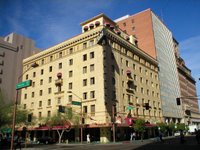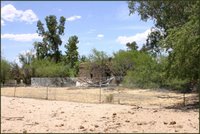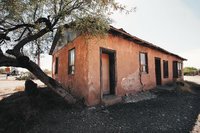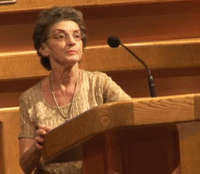 [Source: Stephanie Paterik, Arizona Republic] -- Imagine a high-rise hotel complete with a virtual-reality water park, shark aquarium, sports bar, and spa built atop a historic downtown Phoenix hotel. The owners of Hotel San Carlos on Central Avenue and Monroe Street don't think the idea is so far-fetched. The Melikian family of Phoenix, who bought the 78-year-old hotel in the 1970s, wants to sell a majority interest to a developer who will "take it to the next level." For seven months, the family has quietly contacted city officials to gather support for the proposed $120 million redevelopment project.
[Source: Stephanie Paterik, Arizona Republic] -- Imagine a high-rise hotel complete with a virtual-reality water park, shark aquarium, sports bar, and spa built atop a historic downtown Phoenix hotel. The owners of Hotel San Carlos on Central Avenue and Monroe Street don't think the idea is so far-fetched. The Melikian family of Phoenix, who bought the 78-year-old hotel in the 1970s, wants to sell a majority interest to a developer who will "take it to the next level." For seven months, the family has quietly contacted city officials to gather support for the proposed $120 million redevelopment project.The Melikians must decide what to do with the hotel, which is lauded for its historic value yet faces mounting competition from modern downtown hotels. The family is entertaining an unconventional idea and faces challenges such as picking the right developer, wooing investors, and convincing the city that a significant add-on won't damage the hotel's historic status. Bob Membery, owner of Membery Development Corp. near Flagstaff, has taken the lead in designing the San Carlos' next incarnation. He is trolling for investors to help purchase the property and finance the development. He said there is a lot of interest but no commitments.
Membery's sketches call for a building that would wrap around and sit on top of the San Carlos like a Lego piece. Membery would add 29 stories to the hotel for a total of 36 floors and 400 rooms. The new portion could be a modern, glassy structure or mimic the Italian Renaissance style of the original. All rooms would be sold as condo units, and owners could stay for one to three months and turn their units over to the hotel for the rest of the year. Outrageous amenities would set the San Carlos Resort & Water Park apart from other hotels planned downtown. [Note: To read the full article, click here.]

































